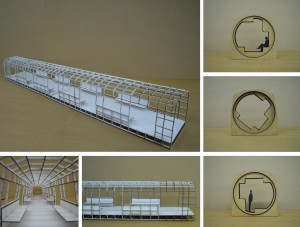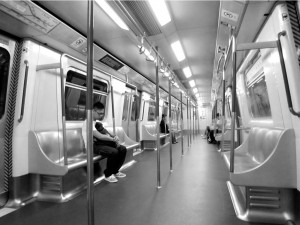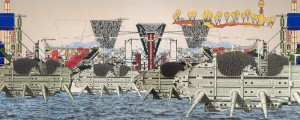SPACE IN TRANSITION
|
What?
According to the Hong Kong Government’s travel Charcteristics Survey, over 90 % of the daily jouneys are on public transport, moreover the MTR has a 46.4% market share of the franchised public transport market, due to the high density of Hong Kong. Since the majority of Hong Kong people take the MTR to go through around the city, the MTR became an important urban node, there is a high concentration of flow, however the space of train has no effect other than transportation. Therefore in this thesis, The programme inside the MTR car would be defined more specific, the space inside the MTR could be transformed in different time. (eg. it could be transformed to restaurant in the morning and pub at night) The thesis intension is to re-design the whole MTR train which could be transformed its programme. The project will have a test cases depending on the complexity of the final site. In this test case will look at the Tuen Wan Line of MTR, because it travels from the Central (commercal area) and into the densely populated residental area (Mongkok, Shan Shui Po), continuning into industral area (Kwai Hing and Tsuen Wan), this line is serving different working class of user, within the site where urban conditions provide the most potential and propose simple strategies. The next test cases will focus on time travel of the jounery, between the station., to find out the passengers’s behaviour, activities and circulation in side the train from 3 levels (1. moving train above ground, 2. underground, 3. overhead on flyer.)
Why?
Discourses on transition space are closely related to the Ron Herron, who proposed building massive mobile robotic structures, the idea and the method reflects a architecture with their own intelligence, that could freely roam the world, moving to wherever their resource s or manufacturing abilities were needed. In the Thomas Heatherwick’s new concept of London bus,he is using Using a simple palette of colours and materials, a family of details was developed that included new stairs, lighting, hand poles and stop buttons, to fullfill the different users’s need. “There is no architecture without action, no architecture without event, no architecture without program” Tsumi. Transition is the process of changing from one state, which is defined as a connecting space between two confined space in Architecture. According to the Tshumi’s idea ”event, space and movement” In his image, he used gematic drawing, photographic and layering the circulation in different programme to show the programme and motion is related to each other. My thesis is an attempt to study the relationship of a space in MTR trains, which can accommodates diersified programs and potentially offer a new form of public space. Moving events redefine the relationship between participants in the event, and their surrounding space, the traveldator event will test to the host a program in its unusal place. Furthermore, to test on how program, space, and human behavior especially social interaction relate each other architecturally. How? Step 1 : Making a testing structural model in 1:25, which to study on details of the space inside the MTR, according to the dimensions, sizes structural performance and safety. Step 2: Making a sectional model with a movable wheel inside, the idea is to testing the possibility to transform the programme inside the space inside the MTR train cars. Step 3: Exploring design an innovative car train prototypes that can re- configure itself according to emerging bespoke demand by individuals while traveling in the future. According to to the passengers behaviour, activities and circulation inside the train from 3 levels (train above ground, underground and overhead on flyer.) BIBLIOGRAPHY 1. Michael Schumacher, 2010, Move : architecture in motion, Basel : De Gruyter |


![expo [Converted]](/2015/wp-content/uploads/sites/3/2015/12/expo-Converted-181x300.jpg)
